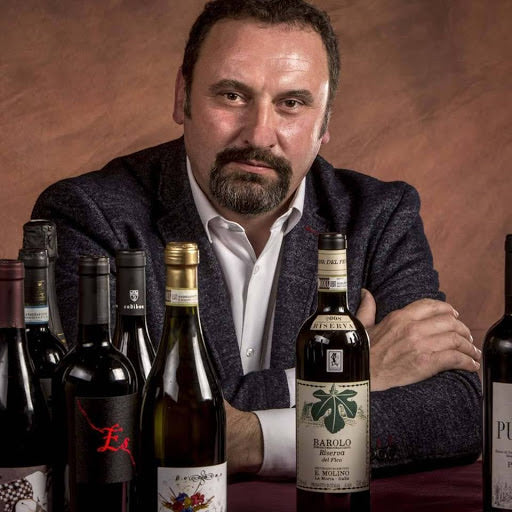***3 Liter bottle comes in wood box***
Our tasting impressions
An excellent Barbera that manages to be serious and yet immensely pleasurable. Tannic for this variety but not oppressively so. Saturated dark fruit flavors with a twist of citrus that adds considerable interest. Probably better down the road but splendid as is. I kept finding interesting new nuances in this wine.
About this wine
The northeast facing vineyard was planted to Barbera in 1949.
The DOCG designation Superiore means the Barbera must age at least a year including at least 4 months in oak barrel.
About the grape
Barbera is a dark-skinned grape from vigorously growing, easy to manage vines, so at least in Piedmont, most of the plantings are on the slopes, exposures and altitudes which are not best for Nebbiolo.
Barbera wines are high in acidity, low in tannins and light bodied - although they can give the impression that they are big and hearty because of their purplish-black hue and relative roundness.
Barbera has been experiencing a Renaissance over the last couple of decades due to greater attention from talented winemakers who have discovered how to better craft the wines.
About the vintage
Hot and dry were the prevailing climate conditions during the 2017 growing season in Piedmont. Most harvested in August - about two weeks earlier than is typical. So, while production levels were reduced, as is often the case, skilled producers are able to craft wines of great concentration. Overall, supple, more accessible wines were produced. Acidity was a concern but well-made wines have ample freshness.
Suggested glassware: Grassl Liberté
Sergio Molino is a highly respected consulting enologist in Piedmont and throughout Italy. This success emboldened him to resurrect his own family's farm and to produce wine from his own vines. The picturesque vineyard sits just below the church of Annunziata.
The Molino family vineyards, bottled under the Ernesto Molino label, as homage to Sergio’s father, lies within the Barolo commune of La Morra, at the base of the hill that leads up to town, just across the border from Castiglione Falletto. Locations such as these, low down on a slope, were considered less desirable but with global warming, the cool air that settles here at night now helps to moderate the heat and add freshness to the wines. Being lower down on a slope also helps alleviate hydric stress (when plants release more water than they absorb) - part of the double whammy climate change is inflicting on Piedmont.
Sergio has a delicate touch in the cellar, preferring to allow the vineyards to speak for themselves. With only a single Barolo vineyard, and a total of just 2.5 hectares under vine, his is a true micro-winery. His wines are distinct, traditional expressions of Piedmont’s grapes, produced with a technical precision honed over decades of consulting work. His tiny quantities of unique wines are an insider’s secret because Sergio is too busy to promote his own wines and is careful not to outshine his clients.
